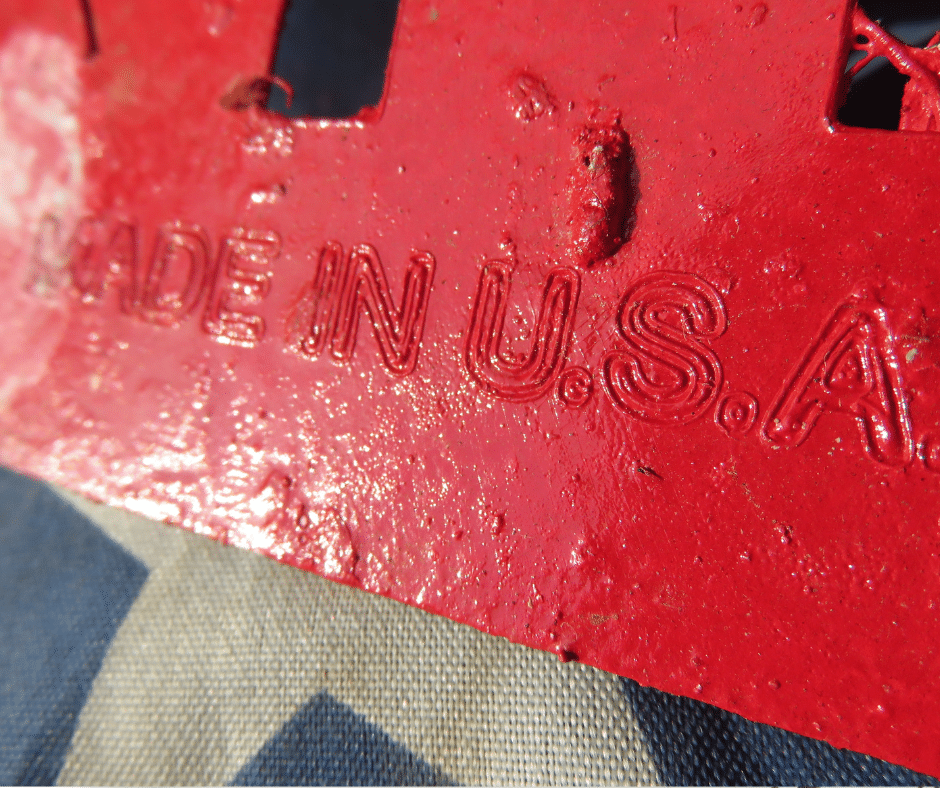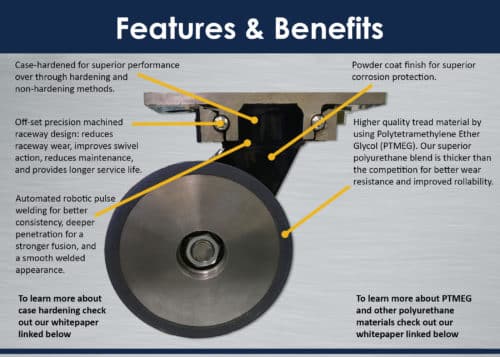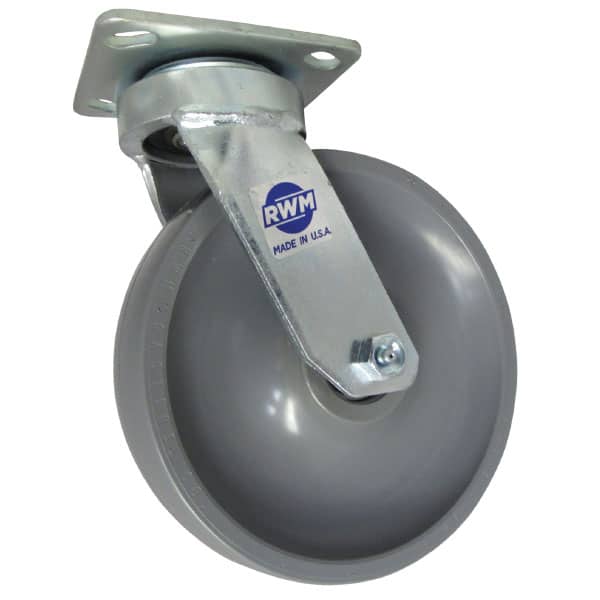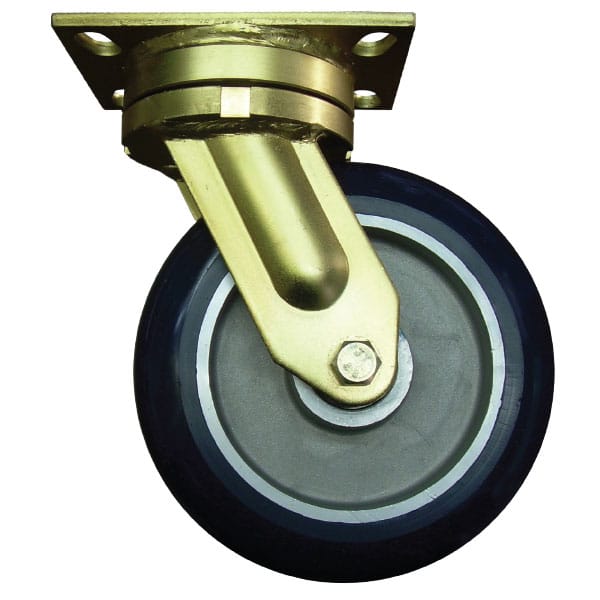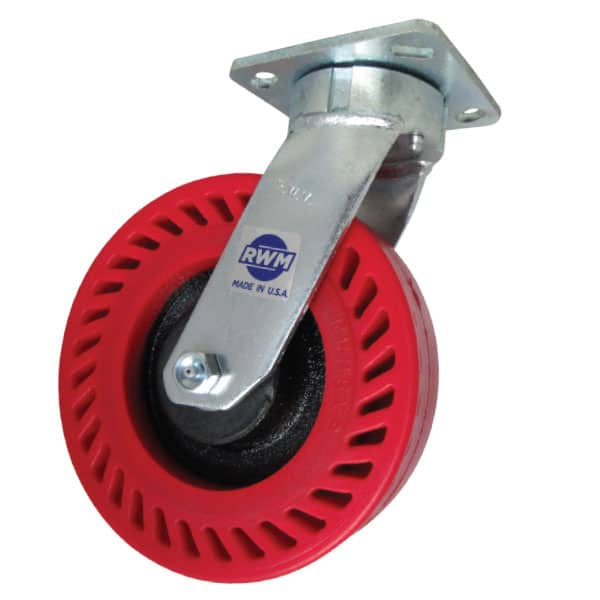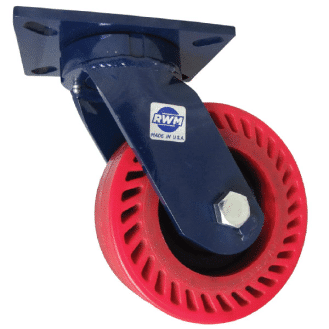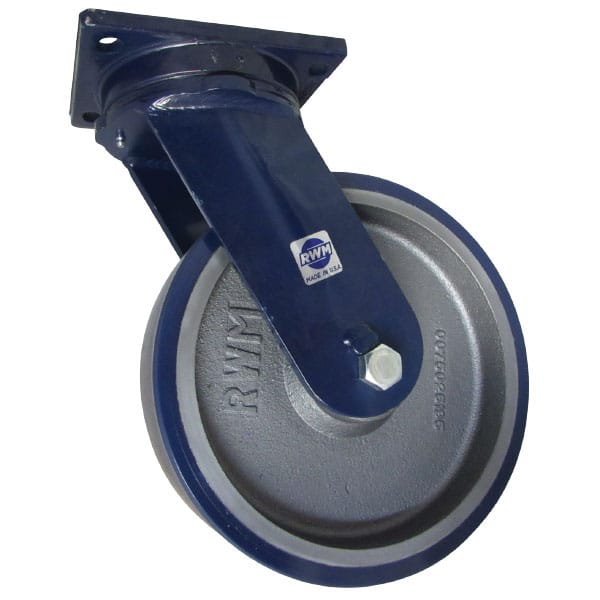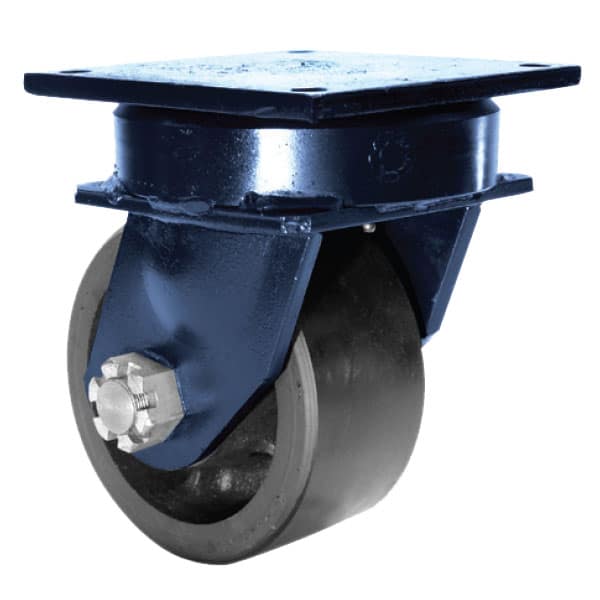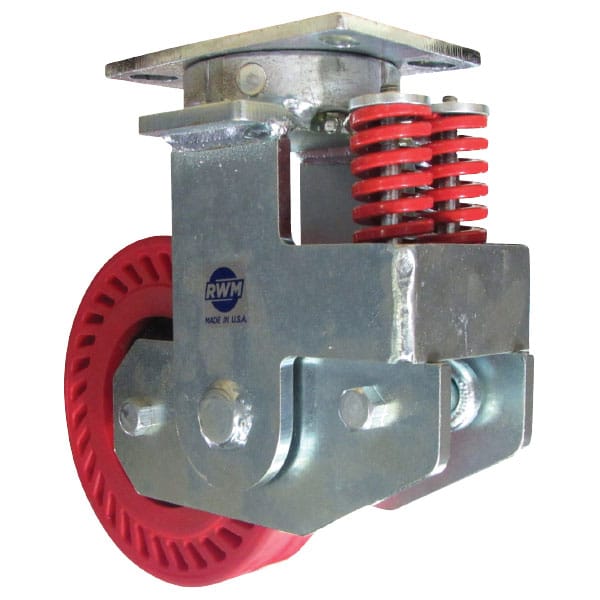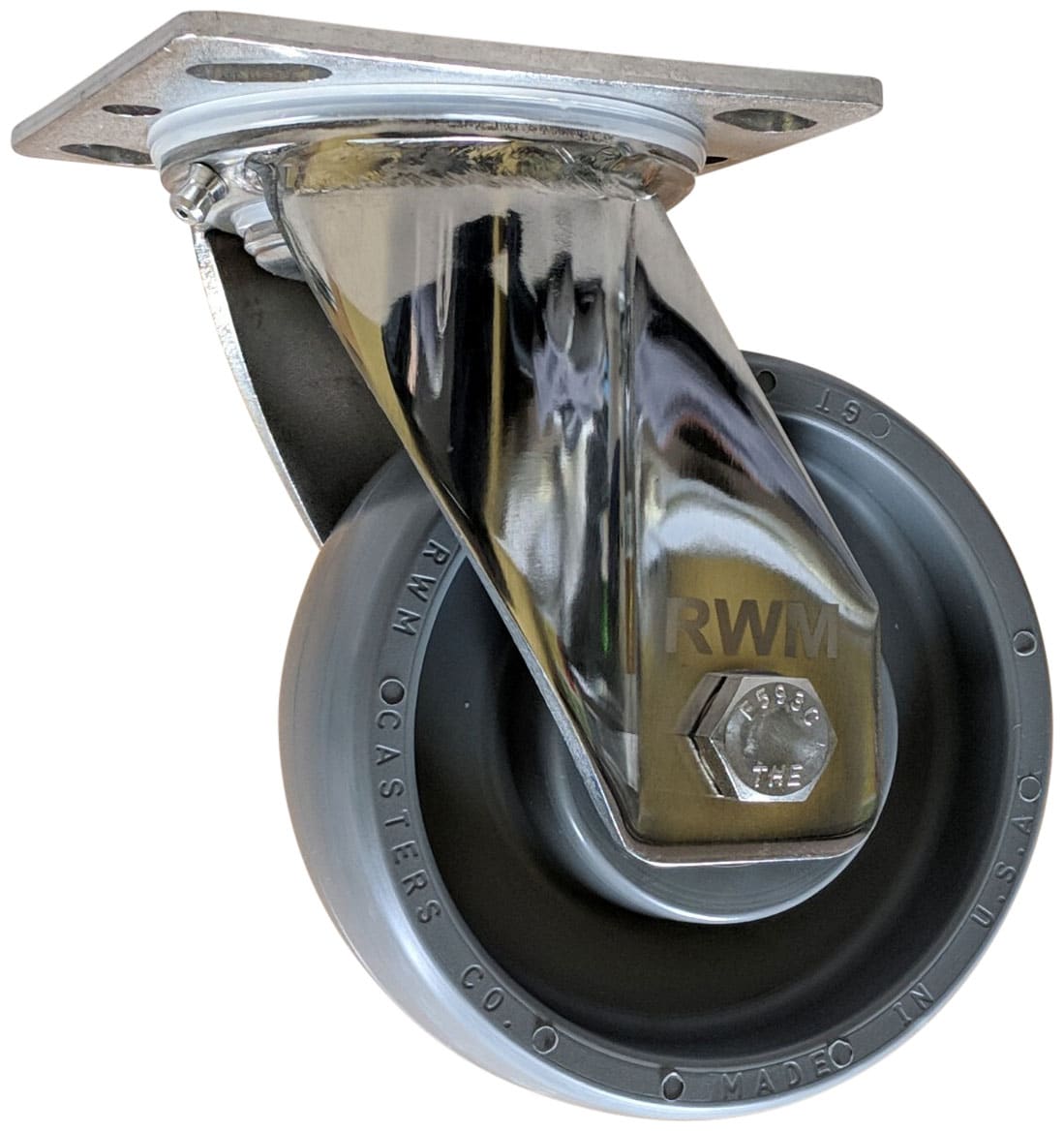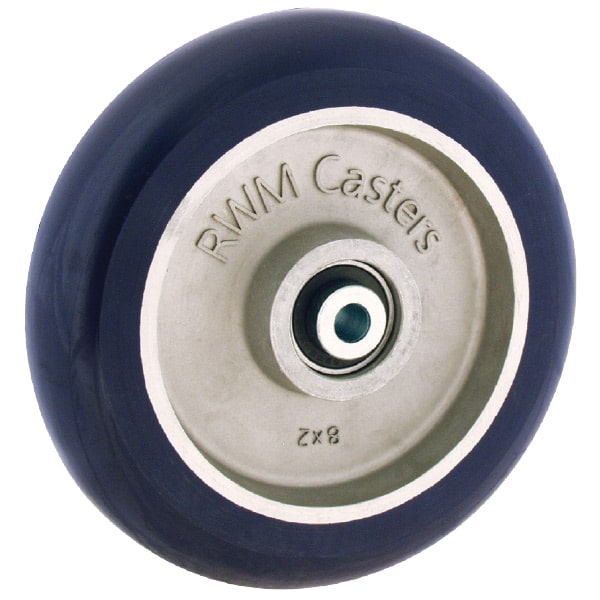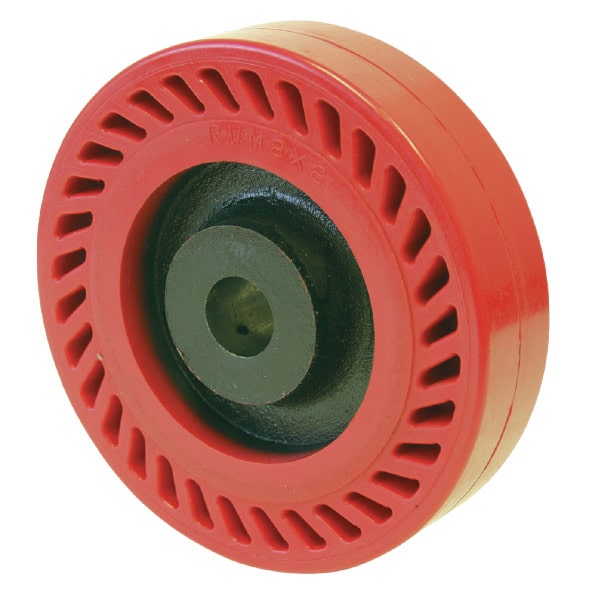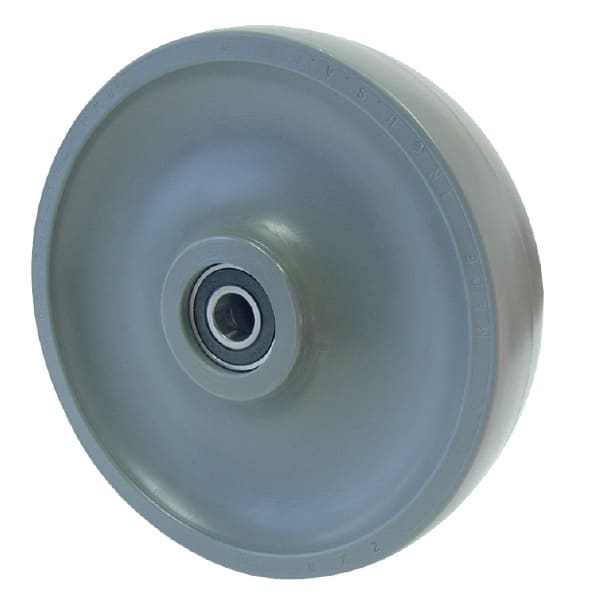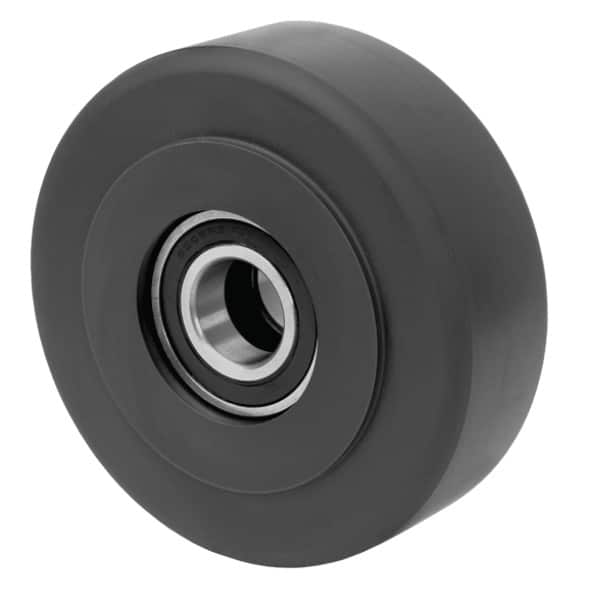At RWM, we believe in being both thorough and accessible. Listed and defined below are common terms used to describe and specify casters and wheels for your convenience.
Brinelling: a permanent deformation of a ball raceway that resembles dimples, caused by the ball bearings during severe loading or severe impact.
Capacity: the maximum load per caster or wheel recommended for intermittent operation over smooth floors at speeds of 3 mph or less. Gross weight should be divided by the number of casters or wheel son which the load is distributed.
Caster Size: a term for classifying casters based on the normal diameter of the caster rig wheel. (i.e., an 8” caster is any caster rig having an 8” wheel.)
Cold Forcing: a process in which extremely heavy presses are used to form the integral parts of a swivel section, the top plate, yoke, and bottom. Cold forging not only provides silk smooth raceways, but also improves the strength of the swivel section work hardening the steel to change and yield greater mass resistance at stress points.
Durometer: a standard measure of the hardness of the wheel thread materials.
Face: the width of the wheel thread cross section, measured at the base of the thread, not the point of floor contact.
Horn or Yoke: the flat part at the top of the horn from which the legs extend. Serves as lower raceway for main load bearing and may provide a seat or upper raceway for secondary load bearing.
Hot Forging: a process in which extremely heavy duty presses/hammers are used to shape heated billets of steel. This process allows steel to be formed to various shapes and thickness within the same part to aid in handling stress points.
Kingpin: a rivet or threaded stud or bolt with nut which integrally holds the mounting plate and horn assembly of a swivel caster together. The size and type of the kingpin is one of the most important components in caster selection and loading.
Kingpinless: a patented swivel section which is held together without a rivet or nut and bolt kingpin. Kingpinless swivel sections are held together by a single row of ball bearings which are contained by a full contact interlocking swivel raceway design.
Kingpin Nut: the nut on the bottom of a threaded kingpin or bolt permitting the disassembly or adjustment of swiveling components. A maintenance feature of better swivel casters.
Legs: the axle support brackets that extend down from the horn base on a swivel caster (from the mounting plate on a rigid caster).
Main Load Bearing: the row of steel balls or rollers that swivels the horn base in relation to the mounting plate of a swivel caster and must be properly sized to counteract the director radial thrust load.
Mounting Plate: the flat base (usually with four bolt holes) that forms the top of the caster and permits attachment by bolting or welding to a flat surface.
Offset or Swivel Lead: the perpendicular distance between the vertical centerlines of the kingpin and the axle of the swivel caster. Large offsets afford easier swiveling, shorter offset provide greater strength. Swivel casters can be provided with “no lead” swivels.
Overall Height: the vertical distance from the top of the caster mounting plate to the bottom of the wheel.
Raceway: the surface in which bearing balls or rollers rotate. Raceways should be hardened for longer caster life.
Radial Thrust: the downward forces exerted on the caster by the load and loading. The force is counteracted by the main load bearing.
Retaining Washer: a steel or plastic washer pressed into the hub ends of some roller bearing wheels to hold the bearing in place.
Rig Only: a swivel or rigid caster assembly (less wheel) that may or may not include the axle/nut, spanner brushing or two thrust washers.
Rollability: the ease of caster starting and rolling as measured by the industry standard drawbar pull. A most important consideration in selecting the best caster for the job. It is determined by loading, floor conditions, type and size of wheel and the type of bearings.
Second Load Bearing: (Standard) the row of steel balls that rides in the raceway between the horn base and secondary bearing retainer of a swivel caster to counteract component thrust. It is the bearing that characterizes the double ball race caster as opposed to the single ball race type. (Precision) a precision self-contained bearing, usually a tapered roller bearing, between the horn base and the kingpin of a swivel caster. The most effective way of providing better swivel action by more effectively counteracting component thrust.
Side Thrust: side forces exerted on a swivel caster and properly counteracted by the secondary load bearing.
Spanner Bushing: a non-rotating sleeve of hardened seamless steel tubing that fits over the axle in roller bearing caster wheels. It serves a dual purpose of providing a smooth inner raceway for the wheel roller bearing and strengthening the caster by permitting the legs to be tightened against it.
Swivel Lead: The distance between the centerline of the kingpin and the centerline of the axle of a swivel caster. The larger the offset, the easier swiveling, but the smaller offset offers greater strength.
Swivel Radius: the horizontal distance from the centerline of the caster kingpin to the outer edge of the wheel. It is a measure of the clearance of the wheel to swivel 360 degrees.
Thrust Washer: a steel washer between the hub ends of the wheel and the inside of the caster legs.

